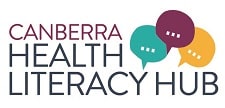Health Literacy and Informed Consent
Health Literacy and Informed Consent
Health Literacy is Critical for Genuine Informed Consent
Health literacy is central to genuine informed consent. Only about 40% of Australian adults can understand and apply health information in the way it is usually presented. This means that six in ten Australian adults are not able to make genuine informed choices about their health, or the care they receive.
Patients have the right to understand health information that is necessary for them to safely care for themselves, and to choose among available treatment options.
Health care providers have a duty to provide information in simple, clear and plain language, and to check that patients have understood the information before ending the conversation[i].
Informed Consent
Informed consent is an important principle in ethical health care. Informed consent is required from a consumer regardless of the treatment – from a blood test to organ donation – and reflects a person’s right to decide what happens to their body.
Obtaining informed consent before starting treatment is a legal requirement in Australia. The law imposes responsibility on healthcare providers to:
- Warn of material risks, complications, side effects and other potential outcomes.
- Discuss alternative options.
- Discuss the consequences of not proceeding with the intervention.
Genuine informed consent can only be achieved if the consumer is provided with information that is tailored to their needs and is easy to access, understand and act on. Effective communication about the relative risk or benefit of a particular course of action is critical to genuine informed consent and shared decision-making.
Medical professionals hold the responsibility to ensure that the health literacy needs of consumers are met in any communication, but this is particularly important when seeking informed consent or at decision points which involve consideration of risk vs benefit.
Informed consent by a patient is the end point of a conversation between the patient and health practitioner who has provided information to the patient to assist them to make an informed decision. Completing the consent form is the final step in the informed decision-making process.
For a consumer’s informed consent to be valid in Australia, certain principles must be met[ii]:
- The patient must have the capacity (ability) to make a decision about the specific issue at the specific time, and not be affected by therapeutic or other drugs, or alcohol
- The consent is voluntarily given, and free from manipulation by, or undue influence from, family, medical staff or other coercive influences
- The discussion between the patient and the health practitioner is transparent, well balanced, and involves two-way communication which is sensitive to the situation
- The patient clearly understands the information because it is provided in a language or by other means the patient can understand
- As far as possible, the patient is advised in simple terms of:
- the diagnosis
- recommended health care, including the expected benefits, common side effects and alternative health care options
- the material risks (including complications) of the recommended option, alternative options and the decision to not receive any treatment
- any significant long term physical, emotional, mental, social, sexual or other expected outcomes
- the anticipated recovery implications
- The patient has sufficient time to consider and clarify information in order to make an informed decision, taking into account the context of the clinical situation
- The information provided and the consent given relate to the specific health care provided.
You can find out more about informed consent in this fact sheet from the Australian Commission on Safety and Quality in Health Care, and this information from the RACGP.
Explore the issue of health literacy in risk communication and informed consent on the following pages:
Communicating Risks and Benefits
Explore tools for improving communication with patients on the following pages:
Informed financial consent means that a health provider must clearly outline what a patient may reasonably expect to have to pay for medical services before they agree to any procedure or care.
Informed financial consent should be included in discussions about treatment options as part of the broader informed consent process.
Patients should be provided with a clear breakdown of the full expected costs of medical treatment and services before they give consent – either implied or in writing. This includes:
- a schedule of fees,
- expected out of pocket expenses, and
- who will be invoicing them for services.
Consumers should be given the opportunity to compare the possible out of pocket expenses of different providers before deciding which specialist to use.
Good informed financial consent should include disclosure by providers of any financial interests in matters in any aspect of their care, including financial interests in facilities utilised or financial gain from the use of devices[i].
If doctors have a financial interest in the facility carrying out the medical care, this must be disclosed to the patient.
Resources:
AMA Informed Financial Consent Guide – for patients
AMA Informed Financial Consent Information Brochure – for patients
References:
[i] Australian Medical Association, 2019, Informed Financial Consent– a Collaboration between doctors and patients https://ama.com.au/sites/default/files/documents/Informed-financial-consent-September%202020-v3.pdf
References:
[i] American Medical Association Foundation and American Medical Association, 2007, Health literacy and patient safety: Help patients understand.
[ii] Kerridge, I, Lowe, I and McPhee, J, Ethics and law for the health professions, 2005, 2nd edition, The Federation Press, Sydney pp 215 to 236.
Last Updated on 17 April, 2025.
